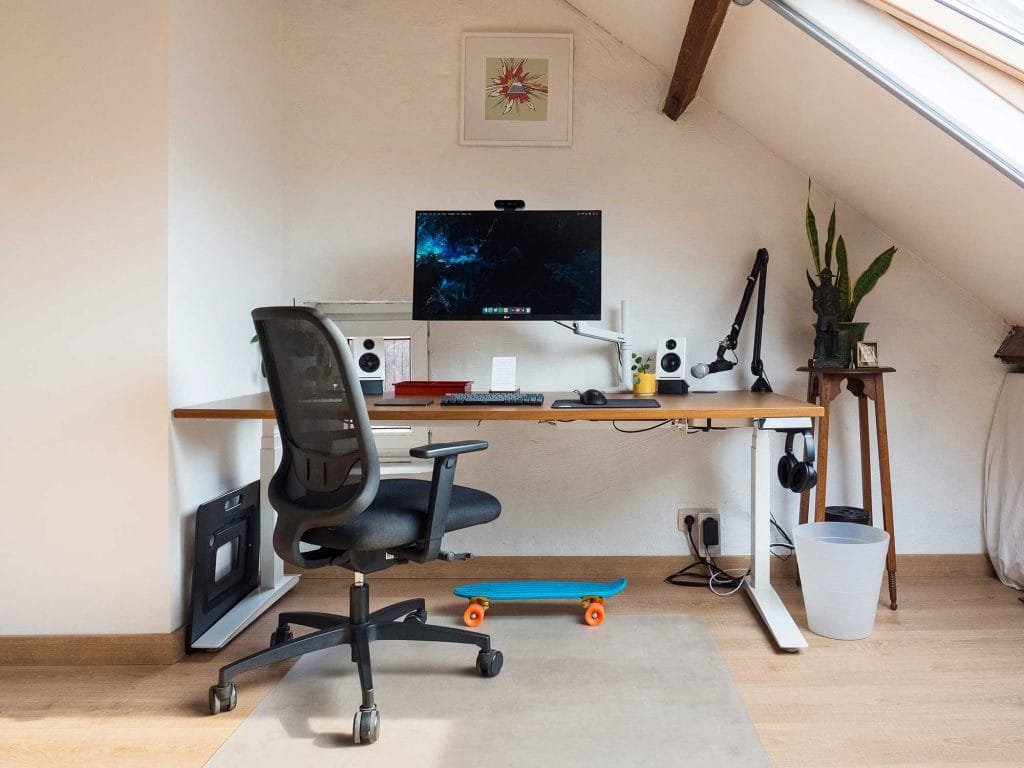Standing vs Sitting: What is the Best Ratio for Office Work?
It’s no secret that sitting all day is bad for your health. In fact, a recent study found that people who sit more than six hours a day are at an increased risk of health issues, regardless of their activity level. This has led many people to start standing while they work in order to improve their health. But is standing really better than sitting? And if so, what is the best ratio of standing to sitting?

Let’s face it, we’ve all been there. You sit down at your desk, ready to tackle a project or get some work done, and the next thing you know hours have passed and your back is killing you. Or maybe you start to feel restless and antsy, and you can’t focus on the task at hand. Either way, it’s clear that sitting at our desks for long periods of time can take a toll on our bodies and our minds. So what are some of the problems associated with sitting at our desks for too long? For one thing, it can lead to back pain and neck pain. This is because when we sit, we tend to hunch over, which puts strain on our spine. Additionally, sitting for long periods of time can also cause circulation problems, as well as numbness and tingling in our extremities. And if that wasn’t enough, evidence suggests that too much sitting can also lead to weight gain and an increased risk of cardiovascular disease.
On the other hand, standing for long periods of time can also lead to fatigue and discomfort. So what’s the solution? The answer to this question has been debated by experts for years. And, just like with most things in life, the answer is probably: it depends. Whichever the case, the key is to find the right balance between sitting and standing and what works best for you and your body. If you have a sedentary job, make sure to get up and move around at least once an hour; if you’re active throughout the day, you may not need to sit as much. However, there can be exceptions to the rule. If you’re pregnant or have a medical condition that requires you to sit down more often, then listen to your body and do what feels comfortable. In the end, there is no magic formula for finding the perfect ratio of sitting and standing. However, by paying attention to your body and making a conscious effort to move more often, you can help ensure that you’re getting the right amount of activity for your needs.
Here are a few more tips to help you find the perfect ratio:
- Listen to your body. If you start to feel pain or discomfort, take a break and walk around for a few minutes.
- Talk to your doctor. They can assess your individual needs and give you specific recommendations.
- Take breaks often. Get up out of your office chair every 20 minutes or so to stretch your legs and give your body a break.
- Standing desks. They allow you to work while remaining on your feet, this helps to improve our posture and reduce back pain. They also help to increase our calorie burn, which can lead to weight loss over time. And, perhaps best of all, they help to increase our productivity levels! If you want to alternate between sitting and standing you can go for a sit stand desk.
Ultimately, finding the right balance of sitting and standing is a matter of trial and error. And while there’s no perfect formula, by paying attention to our bodies and being mindful of the activity we’re engaged in, we can find the sweet spot that works best for us.
